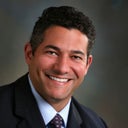Posted underHair Transplant q&a
My hairline is really weird and uneven. It really bothers me. Any way can fix it or make it look better? (photo)
Answers (10)
From board-certified doctors and trusted medical professionals

Dr. Jae Pak, MD
Hair Restoration Surgeon, Board Certified in Emergency Medicine
Answer

Dr. Sanusi Umar, MD
Dermatologic Surgeon, Board Certified in Dermatology
Answer
Dr. Robert Haber, MD
Dermatologic Surgeon, Board Certified in Dermatology
Answer
Dr. William Rassman, MD (retired)
Hair Restoration Surgeon, Board Certified in General Surgery
Answer
Dr. Sara Wasserbauer, MD - Account Suspended
Board Certified Hair Restoration Surgeon
Answer
Dr. Richard W. Fleming, MD (retired)
Board Certified Facial Plastic Surgeon
Answer

